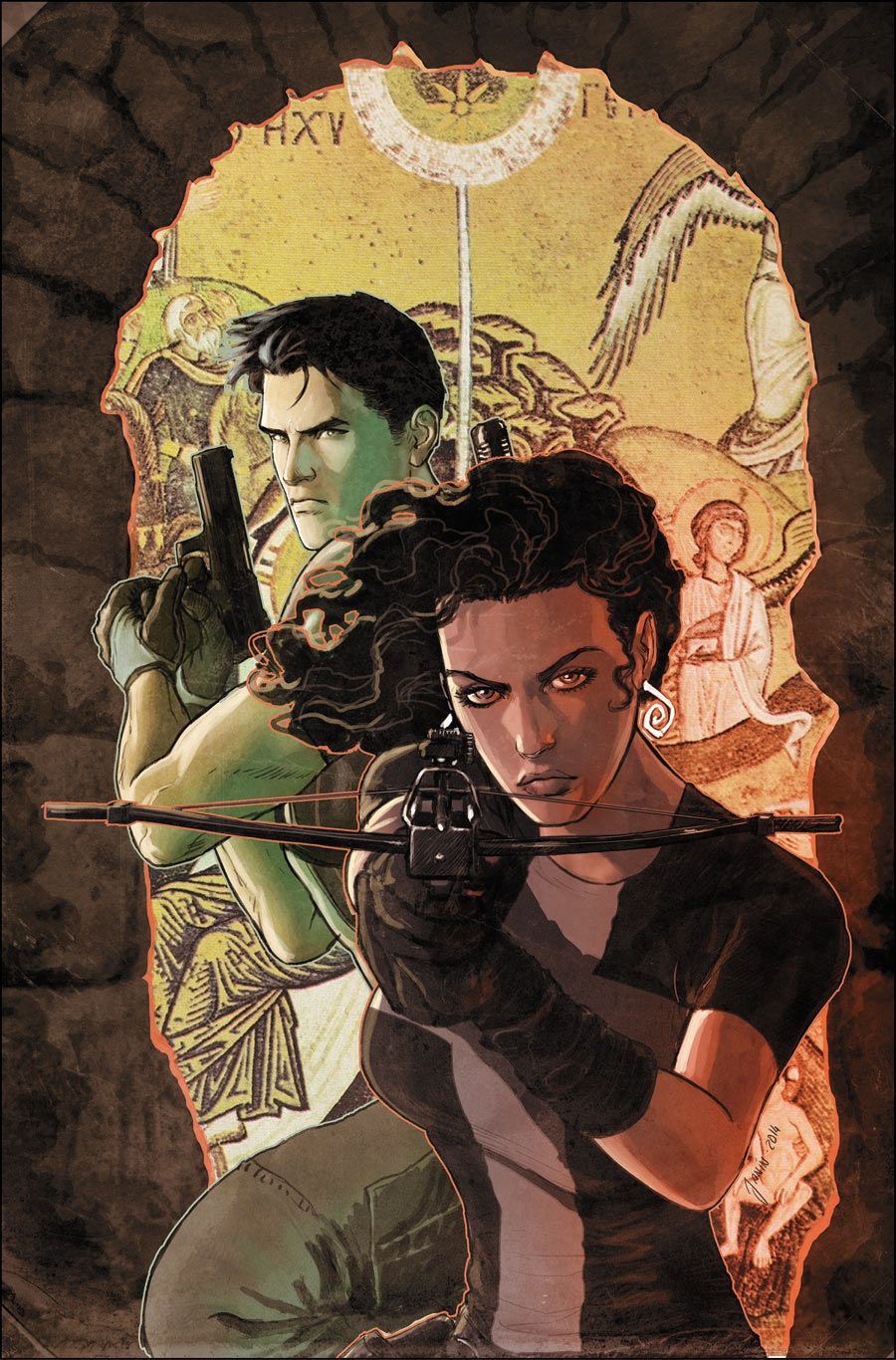In Tom King, Tim Seeley and Stephen Mooney's "Grayson Annual" #1, Helena Bertinelli gets a tour of Ireland like she's never dreamed -- or at least one she probably never wanted. Tied up and stuffed in a trunk, Helena is more a chess piece than a player as Irish bomb-maker Rock recounts the story of her capture to two members of St. Francis' gang on their way to meet the dangerous mobster. King, Seeley and Mooney pack a lot of solid thematic elements into this entertaining but thought provoking one-off, though it occasionally struggles with odd layouts and perspective choices.
With a story centered on three unfamiliar antagonists, King and Seeley had a lot of heavy lifting to do in order to tie all of the elements of this one-shot together, but they do a magnificent job of marrying the plot to the storytelling motif and its consequently relevant setting. In choosing a brand new character on which to focus, they give themselves the creative freedom to craft a brand new story that sets Dick and Helena aside, which offers both a fresh perspective and the opening for the neat twist at the end of the issue. While much of the plot works towards building Rock's character for the concluding reveal, it parcels out some morsels information about Helena and Spyral respectively, including how Hypnos are designed to work.
What's more, the setting plays into the story to nice effect. Instead of being a backdrop to the larger story, it becomes part of the action. King and Seeley pair the story with an old Fenian tale, which helps to set the tone and establish the theme. While the tale factors into the issue's attention to bluffs and disguise, it doesn't parallel the plot exactly; in turn, this provides some nice variety without making the final reveal too obvious. King does a nice job with the dialogue as well, using colloquialisms and dialect to portray their accents. Where this is a convention that can get old fast, King is balanced in his approach, culminating in conversation that is more naturalistic than irritating. The setting also ties nicely to the villain, St. Francis, which borrows from Ireland's Catholic roots in a fantastically unnerving way (though I can't help but pause to wonder why they didn't opt for St. Patrick, the more obvious choice).
Like his work on the "Futures End" tie-in, Mooney's work is hit-or-miss here. With lighter, pastel colors provided by Jeromy Cox, however, Mooney's figures are thrown into sharp relief; likewise, they become clearer and more expressive with the help of lighter shading. He has a particularly nice sequence that clusters important aspects of Helena's life around her clear, strongly posed figure.
Regardless, his work is lacking in other areas. He offers some odd perspective shots, like an overhead look at the three's pub table, that contorts the figures rather than diversifying the layouts. Neither he nor Cox provide any visual indicators as the narrative bounces between the past and present, which interrupts the flow; they do, however, provide some assistance for the transition between Rock and his Fenian legend, though that sequence needed less of a visual aid than did the time jump. Similarly, the twist at the end fails to elicit a stronger shock in that there's no good look at Dick following the reveal. Mooney stretches out the narrative with large panels that come too late or don't emphasize anything of importance to the story. Where King and Seeley give the significance of the setting weight through subtle and repetitive nods in the dialogue, Mooney busts out a garish splash page that looks more like an ad for Irish tourism than it does a part of the story; he pairs Irish stereotypes -- like pubs, sayings, and dance -- with more nuanced staples -- such as the Children of Lir, Cuchulainn, and the Book of Kells -- over a broad view of the country that fails to signify the journey that the characters undertook.
With a lot of depth, "Grayson Annual" #1 toys with the idea of narrative and builds to an excellent payoff. "Grayson Annual" #1 is another solid chapter for King and Seeley, although the issue ultimately flounders a little under Mooney's peculiar art direction.

